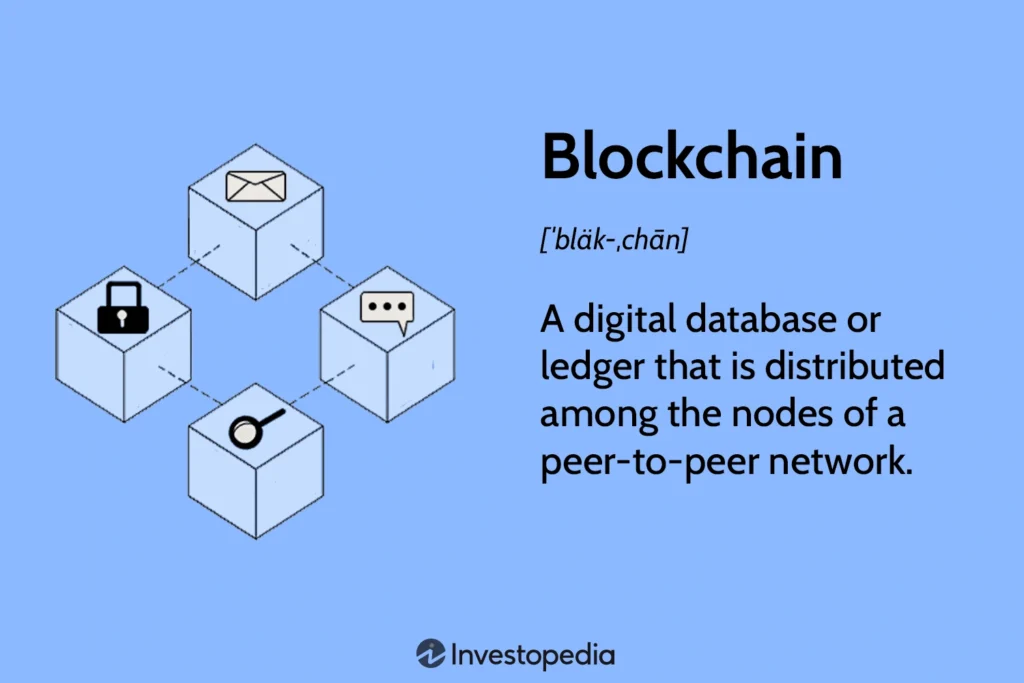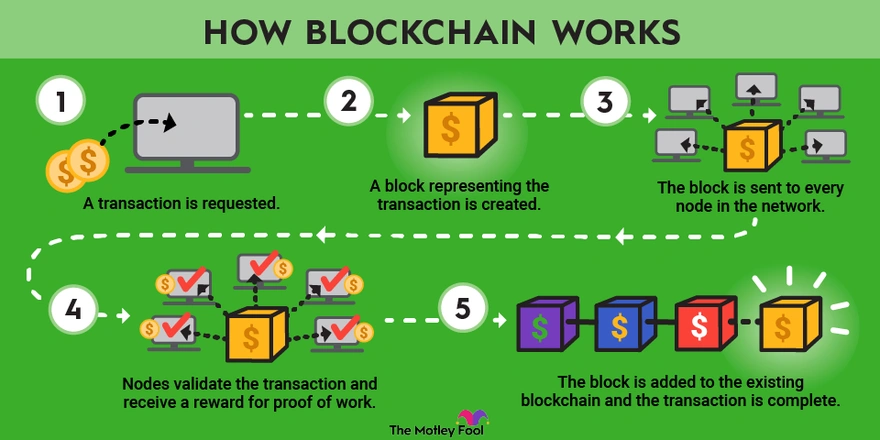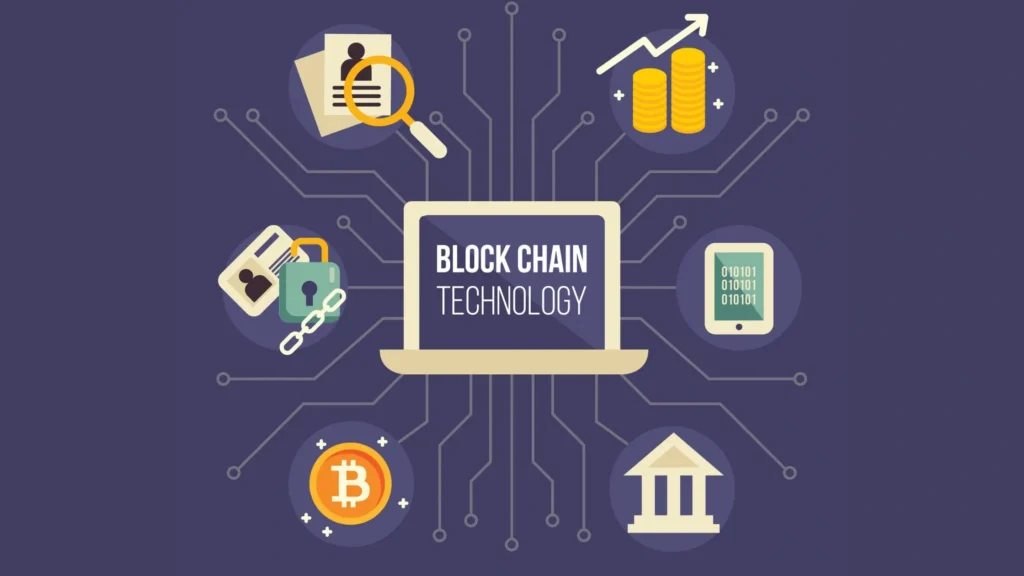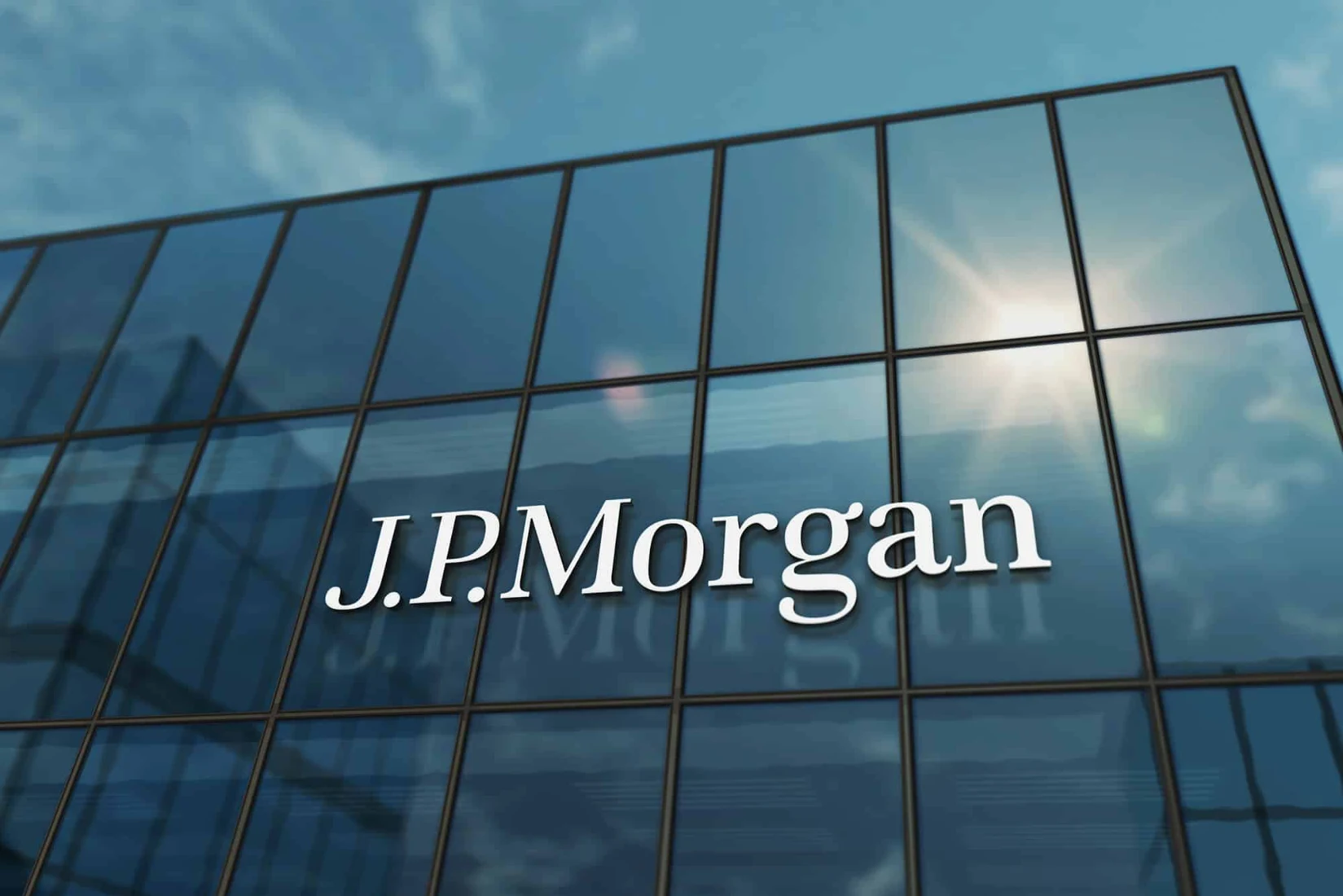A Technology That’s Changing the Rules—Even If You Don’t See It Yet
If someone told you that a digital system could store money, verify a contract, trace food shipments, and protect your medical records—all without a bank, lawyer, or central server—you might be skeptical. And yet, that’s what blockchain technology quietly enables every day.
Still, for many beginners, blockchain can feel intimidating. It’s often described with dense diagrams or buried in cryptocurrency jargon. This article is here to do the opposite: to offer a grounded, story-based understanding of how blockchain works, why it’s gaining relevance, and what every beginner should know in 2025.
So What Exactly Is Blockchain Technology?

Credit from Investopedia
Imagine a notebook that hundreds or thousands of people all own identical copies of. Anytime someone writes a new entry, everyone else’s copy updates too—automatically, instantly, and with proof that it hasn’t been tampered with. Now imagine that once an entry is written, no one can erase or change it. That’s the foundation of blockchain.
Technically, blockchain is a distributed digital ledger. Rather than storing information on one central server, it keeps data spread across a network of users (often called nodes). These users validate, secure, and record transactions together. Each new batch of data forms a “block,” which links chronologically to the previous one—creating a continuous, time-stamped “chain” of events.
The idea is simple: build trust into the system itself, rather than relying on any one institution.
Why Are People So Interested in Blockchain Technology Now?
In a world increasingly driven by digital records, blockchain offers something rare—data you can trust without needing to trust the person who gave it to you.
Take financial services, for example. Traditional transactions often rely on third-party verifiers—banks, payment processors, legal bodies—each adding layers of time, cost, and risk. Blockchain changes the model by letting the network itself verify transactions. The result? Lower fees, faster settlements, and far less fraud.
Or consider global supply chains. Imagine tracking your morning coffee from a farm in Colombia to a café in Tokyo. With blockchain, every step—from harvesting beans to shipping containers—can be recorded immutably. That means better quality control, safer products, and transparency for everyone involved.
Even governments and hospitals are exploring how to secure records, contracts, and public data using blockchain.
Understanding How Blockchain Works — Step by Step

Credit from The Motley Fool
Let’s walk through a simplified version of what actually happens behind the scenes when a blockchain transaction occurs. No tech background required.
It begins when someone initiates an action: perhaps a transfer of digital currency or the signing of a digital agreement. This action is broadcast to a network of computers, which individually examine it. These computers, or nodes, must reach consensus—an agreement that the transaction is valid based on shared rules.
Once verified, the transaction is grouped with others into a “block.” That block is sealed with a digital signature and connected to the chain of previous blocks. Once added, the block is permanent. Anyone can view it, no one can change it, and everyone’s record reflects the same truth.
This process repeats every time new data is added—meaning blockchain is always updating, always expanding, and always synchronized across the network.
Concepts That Seem Technical—But Aren’t
Even for non-coders, a few basic terms can help you see how this all fits together.
A “distributed ledger” means everyone shares the same version of truth—rather than trusting a single party. “Smart contracts” are like rules written in code: if X happens, then Y automatically follows. This might be a payment triggering only when delivery is confirmed. “Public and private keys” act like digital locks and signatures, proving who you are without passwords.
“Consensus mechanisms” are how the system makes decisions without a boss. Think of them as digital voting—if enough nodes agree, a transaction goes through.
Where You’ll See Blockchain Technology in Real Life

Credit from Eastgate Software
Though blockchain began as the engine behind cryptocurrencies like Bitcoin, its usefulness has expanded dramatically.
In the energy sector, some homeowners are using blockchain platforms to sell unused solar power directly to neighbors—no utility company needed. In finance, blockchain is being used for interbank transactions that settle in seconds instead of days. Healthcare providers are using it to protect patient records. Musicians and filmmakers are storing copyright metadata on blockchain to prevent piracy. Even voting systems are exploring its potential to ensure clean, traceable election results.
In 2025, you may not see blockchain on the screen in front of you, but chances are, it’s quietly running under the hood.
Not All Blockchains Are the Same
It’s easy to imagine that there’s just one big blockchain out there, but that’s not the case. Public blockchains—like Bitcoin or Ethereum—are open to anyone. Anyone can join, verify transactions, or view the data.
Private blockchains, on the other hand, are controlled by a specific organization. Access is restricted, which makes them faster and more private, but less open. Some systems are hybrids—combining public transparency with private control.
There are also consortium blockchains, shared between several organizations that trust one another but still want decentralized control. The shipping and logistics industries often use this model.
The Tools Behind Blockchain: Protocols and Platforms
You might hear names like Ethereum, Hyperledger, or Corda mentioned alongside blockchain. These aren’t currencies—they’re platforms or protocols that developers use to build applications.
Ethereum is known for its flexibility and smart contracts. Hyperledger is used by enterprises that need private systems. Corda is particularly popular among banks for its privacy features. Each one serves different needs, but they all rely on the same foundational ideas.
Blockchain, Cloud, and the Good Old Database
You may wonder how blockchain differs from a regular database or cloud service.
A traditional database is like a central filing cabinet—it’s fast and easy to edit, but only as secure as the person holding the keys. The cloud is more like renting server space—reliable, scalable, but still centralized.
Blockchain is different. It doesn’t just store data; it verifies and locks it. It’s not editable, but it’s incorruptible. That makes it uniquely suited for tasks where truth matters more than convenience.
Interestingly, many companies now offer “Blockchain as a Service” (BaaS), where you can build blockchain systems without managing the infrastructure yourself. Amazon Web Services and Microsoft Azure both offer these tools, making blockchain accessible even to non-developers.
From Bitcoin to Business: A Timeline
The history of blockchain dates back further than many realize. Early ideas about secure, time-stamped digital records emerged in the 1990s. In 2008, Bitcoin introduced the first full implementation of blockchain as we know it.
Ethereum followed in 2015, adding programmable smart contracts. By 2025, blockchain has become an invisible force across multiple industries—not just a cryptocurrency engine, but a broader architecture for digital trust.
Conclusion: Why Understanding Blockchain Technology Matters Now
In a digital age where we store memories, money, identity, and trust online, blockchain technology has emerged as a quiet but powerful alternative to the systems we’ve relied on for decades.
It’s okay if you’re not an expert. What matters is recognizing that blockchain isn’t just about code—it’s about how we create and verify truth. Whether you’re a student, small business owner, artist, or everyday digital citizen, understanding this technology, even at a basic level, is part of becoming fluent in the future.
So the next time you hear someone ask “What is blockchain?”, you’ll have more than just a definition. You’ll have a story to tell.



